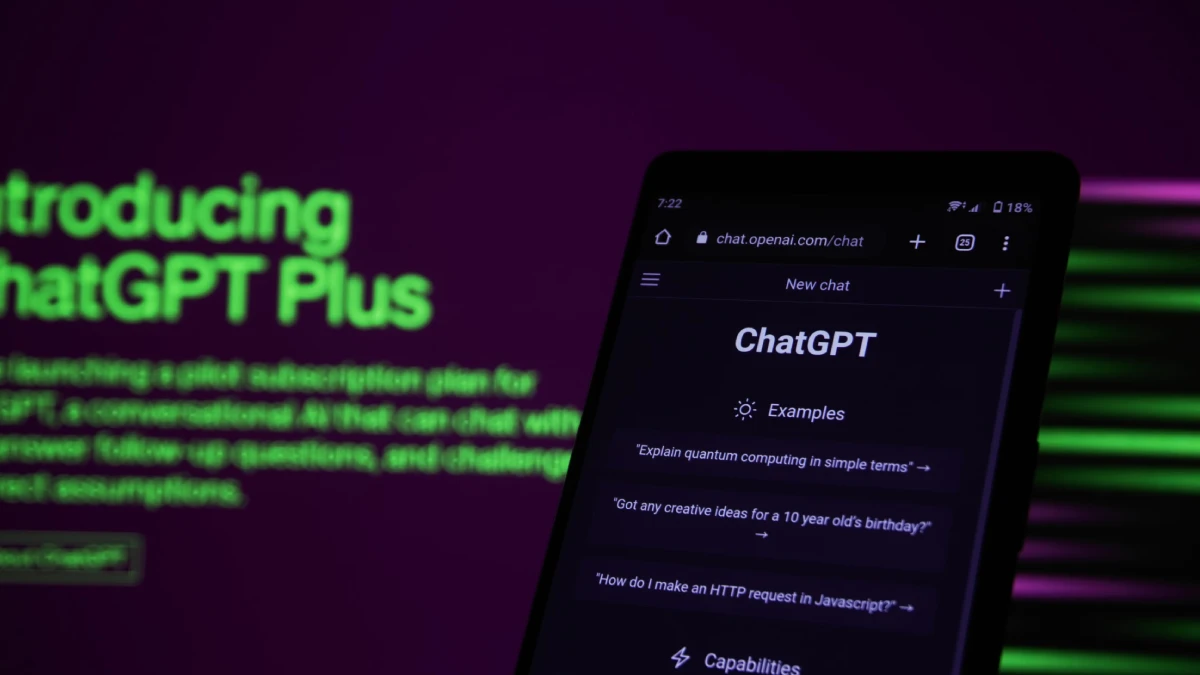In the fast-paced world of content creation, a new player has emerged – the AI prompt. But what exactly is an AI prompt, and how does it shape the landscape of written content? Let’s delve into the intricacies of this innovative tool and explore its impact on the art of writing.
Table of Contents
Understanding AI Prompts: How Do They Work?
AI prompts function as stimuli for artificial intelligence models, guiding them to generate human-like text. These prompts are essentially cues that instruct the AI on the tone, style, and content required. This process has revolutionized the efficiency and creativity of content creation.
Benefits of AI Prompts
- Increased Productivity : AI prompts empower writers by streamlining the creative process. With a well-crafted prompt, writers can efficiently produce content, saving valuable time and resources.
- Enhanced Creativity: By providing a starting point, AI prompts stimulate creativity, pushing writers to explore new ideas and perspectives. The result is content that goes beyond conventional boundaries.
- Time-Saving Advantages: In a world where time is of the essence, AI prompts offer a time-saving advantage. They enable writers to generate quality content rapidly, meeting tight deadlines without compromising on quality.
Applications in Content Writing
AI prompts find applications in various content domains, from blog posts and SEO content to engaging social media captions. Their versatility makes them a valuable asset for writers across different industries.
Addressing Perplexity in AI Prompts
Perplexity, the measure of uncertainty in language models, is a common challenge in AI-generated content. Striking a balance between perplexity and clarity is crucial to ensure the effectiveness of the generated text.
Burstiness in AI Prompt Content
Burstiness refers to the ability of AI prompts to produce content that captivates and engages the audience. This quality is essential for creating compelling and memorable pieces that resonate with readers.
Maintaining Specificity and Context
While the burst of creativity is desirable, maintaining specificity and context is equally important. Writers need to navigate the challenge of creating content that is both unique and contextually relevant.
Writing Style for AI Prompt-Generated Content
- Conversational Tone: Embracing a conversational tone humanizes the content, making it more relatable and engaging for the audience.
- Use of Personal Pronouns: Incorporating personal pronouns fosters a connection between the writer and the reader, adding a touch of authenticity to the content.
- Active Voice and Brevity: Utilizing the active voice and keeping the content brief ensures clarity and impact, preventing the reader from losing interest.
Keeping it Simple
- Importance of Simplicity: Simplicity in language enhances accessibility, making the content more digestible for a wider audience.
- Examples of Effective Simplicity in Writing: Exploring real-world examples showcases how simplicity can be a powerful tool in effective communication.
Engaging the Reader
- Techniques for Reader Engagement: From storytelling to interactive elements, employing various techniques keeps the reader immersed and invested in the content.
- Creating a Connection Through Content: Establishing a connection fosters a sense of loyalty and trust between the writer and the audience, elevating the impact of the content.
Rhetorical Questions in Content
- Purpose and Impact of Rhetorical Questions: Harnessing the power of rhetorical questions adds a layer of thoughtfulness, encouraging readers to reflect on the content.
- Examples of Effective Use: Illustrating how rhetorical questions can be employed effectively in different contexts.
Analogies and Metaphors
- Explanation of Analogies and Metaphors: Understanding the role of analogies and metaphors in enhancing the richness and depth of content.
- Incorporating Them into Content: Practical tips on seamlessly integrating analogies and metaphors into AI prompt-generated text.
Examples of AI Prompts
1. Photorealistic:
- A close-up portrait of a pensive astronaut gazing out at Earth from the moon’s surface, rendered in hyperrealistic detail. (Think NASA photos meets sci-fi painting)
- A majestic snow-capped mountain reflecting in a crystal-clear glacial lake, bathed in the warm glow of sunrise. (Imagine National Geographic-quality landscape)
- A bustling cyberpunk cityscape at night, neon lights and flying cars casting vibrant shadows on futuristic skyscrapers. (Think Blade Runner meets Blade Runner)
2. Artistic Styles:
- A playful rendition of a cat chasing butterflies in a garden, painted in the swirling, whimsical style of Van Gogh.
- A serene underwater scene with a school of fish weaving through coral reefs, captured in the bold, flat colors of Japanese woodblock prints.
- A dramatic portrait of a king lost in thought, sketched in the intricate crosshatching technique of Rembrandt.
3. Imaginative:
- A sentient robot, its metallic body adorned with flowers, strolling through a vibrant meadow filled with bioluminescent plants.
- A giant chessboard floating amidst a cosmic nebula, where planets serve as pieces and constellations trace the winning moves.
- A mischievous fairy perched on a mushroom, casting spells that make raindrops dance in the moonlight.
4. Humorous:
- A dog wearing a monocle and top hat, attempting to operate a tea set with comical clumsiness.
- A group of penguins awkwardly trying to learn ballet, their flippers struggling to execute graceful movements.
- A squirrel caught in the act of burying an acorn in a politician’s hat, their expressions filled with mischievous glee.
5. Open-ended:
- Describe a world where animals have built their own civilization.
- Capture the emotional essence of a single raindrop falling on a windowpane.
- Show me a dream that a computer might have.
The Best Platforms for Writing AI Prompts: A Guide to Boost Your Productivity
Online AI Platforms:
AI prompts usage in online AI platforms has become increasingly prevalent and impactful. These platforms, exemplified by services like OpenAI’s GPT models, empower users to harness the capabilities of artificial intelligence through natural language input. By interfacing with these platforms, individuals can explore a multitude of applications, from content generation and coding assistance to creative writing and problem-solving. Leveraging AI prompts in online AI platforms facilitates a seamless interaction with advanced language models, unlocking innovative possibilities and streamlining various tasks across diverse domains.
Many online platforms offer AI models that can be interacted with through prompts. For example, OpenAI’s GPT models, like GPT-3, Midjourney, CopySmith, Jasper, etc.
Coding Environments:
You can integrate AI prompts into your coding environments to assist with code generation, debugging, and related tasks. Some platforms allow direct interaction with AI models for coding assistance.
Chatbot Development Platforms:
If you are building chatbots, various development platforms allow you to input AI prompts to generate responses and improve the conversational abilities of your chatbot.
Text Editors and IDEs:
You can experiment with AI prompts directly in text editors or integrated development environments (IDEs) that support the integration of AI models for writing assistance or code generation.
Specialized AI Writing Tools:
Some writing tools and applications are specifically designed to leverage AI for content creation. These tools often use AI prompts to understand user input and generate relevant content.
Collaborative Writing Platforms:
Collaborative writing platforms may integrate AI prompts to assist users in generating content, improving collaboration, and enhancing the overall writing process.
Education Platforms:
In educational settings, platforms that focus on AI in education may incorporate AI prompts to assist students in learning, generating ideas, or answering questions.
Customer Support Systems:
AI prompts can be integrated into customer support systems to assist in generating responses to user queries and improving the efficiency of support services.
Interactive Websites:
Some websites integrate AI models that respond to user prompts, providing information, answering questions, or assisting with various tasks. Integrating AI prompts into interactive websites enhances user engagement and functionality. From dynamically generating personalized content to providing intelligent responses, AI prompts contribute to a more interactive and user-friendly online experience.
Whether assisting users in decision-making processes, offering real-time information, or optimizing search functionalities, the strategic incorporation of AI prompts empowers interactive websites to deliver a seamless, responsive, and tailored user journey. This innovative use of artificial intelligence not only elevates user satisfaction but also positions interactive websites at the forefront of technology-driven, user-centric online interactions.
AI Model Sandboxes:
Some platforms provide sandboxes or playgrounds where you can experiment with AI models by inputting prompts and observing the model’s responses.
When using AI prompts, it’s essential to be mindful of the platform’s capabilities, guidelines, and terms of use. Additionally, staying informed about the specific features and functionalities of the AI model you’re working with will help you make the most of AI prompts in your chosen context.
Conclusion
In summary, AI prompts have become indispensable tools in the content creation arsenal. Their ability to boost productivity, enhance creativity, and streamline the writing process makes them valuable assets for writers across industries.
FAQs
How does an AI prompt work?
AI prompts function as cues for artificial intelligence models, guiding them to generate human-like text based on the provided instructions.
Can AI prompts replace human writers?
While AI prompts are powerful tools, the nuanced creativity and emotional intelligence of human writers remain irreplaceable.
Are there limitations to AI prompt-generated content?
Yes, limitations include potential biases in training data and the need for careful oversight to ensure content aligns with ethical standards.
How can one enhance the creativity of AI prompt-generated content?
Experimenting with diverse prompts, incorporating varied writing styles, and refining prompts based on feedback can enhance creativity.
What industries benefit most from AI prompt usage?
Industries such as marketing, content creation, and e-commerce find significant benefits in using AI prompts for rapid and creative content generation.





